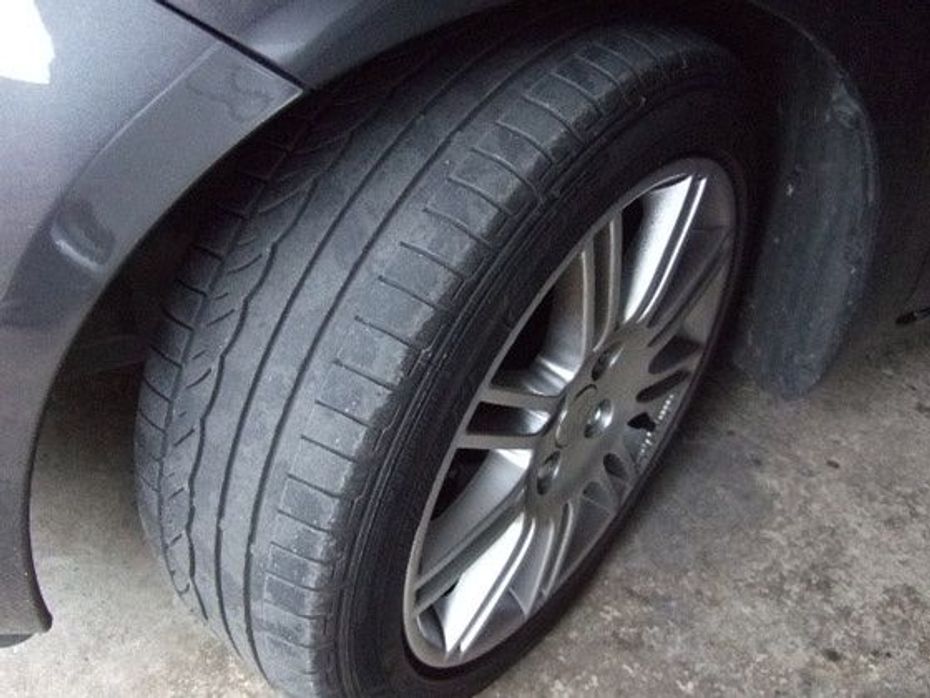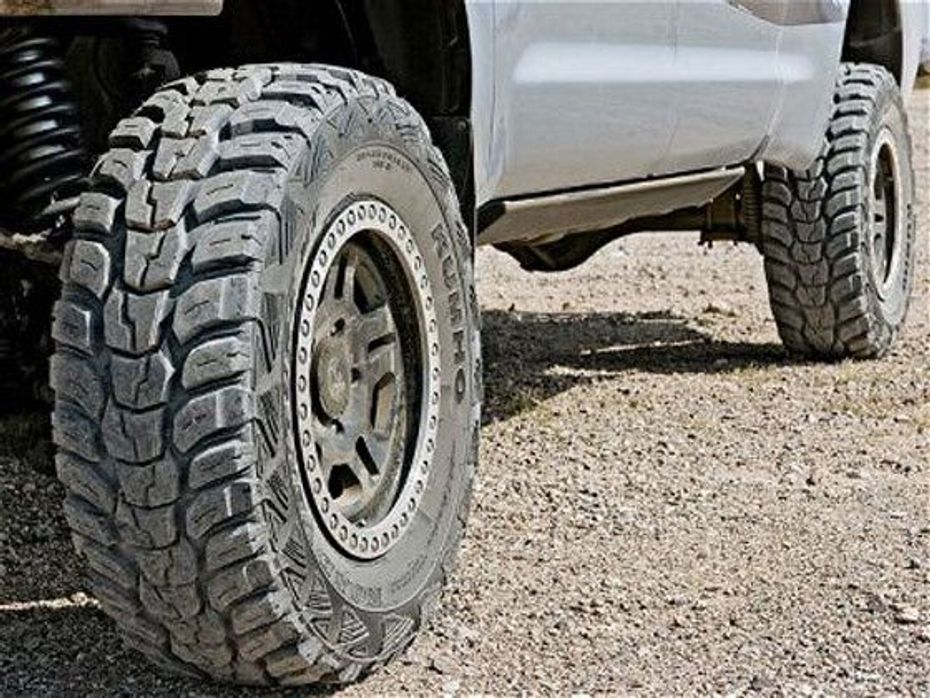
3 New Major Design Details Mahindra XUV 3XO Will Pack Over...
- Apr 12, 2024
- Views : 9996

People are very concerned about the choice they make while buying a car. In contrast to that most people ignore the tyres. Barring a few people who are enthusiasts or have knowledge about different types of tyres, people buy and replace standard, all season, all weather tyres. However, there are different types of tyres available in the market to suit the driving needs of the driver and road conditions which the car faces. Read on to find out more.
Before we go onto different types of tyres, the difference and benefits of tubeless tyres over tube type tyres should be discussed. Tube tyres have an inner tube between the wheel rim and the tyre. This tube holds air which supports the vehicle on its tyres. The tyre holds its shape due to the air inside the tube. Tube type tyres are vulnerable to punctures due to excessive heat generated by friction between the tube and the tyre wall, this reduces tyre life. Also, this friction increases rolling resistance and reduces fuel economy. It can also get punctured if the tyre is not fit properly.
Tube type tyres can also be punctured when a nail gets stuck in the tyre from the road. The hole made in a tube expands very quickly as the tube is made of thin rubber which is under constant friction from the tyre and this results in very quick loss of air from the tyre. This can lead to high speed blowouts, in which a sudden sharp penetration at high speed causes the tube to burst. The air expelled at high pressure from the tube forces its way out of the tyre from around the rim and the tube valve hole. The pressure exerted by this escaping air can be strong enough to rip open the tyre. A burst tyre causes a sudden loss in road contact between the car and the road which is sufficient to throw a vehicle off course violently.
Tubeless tyres have no tube inside them. The air is held between the tyre and the rim. Most new cars come with tubeless tyres as they are safer than tube type tyres which can lose air very quickly in case of a puncture. Tubeless tyres lose air in case of a puncture only through the hole which does not expand, as a result the deflation of the tyre is gradual and takes much longer. The lack of a tube also reduces rolling resistance caused by friction between the tyre and tube. Also, the lack of a tube reduces unsprung weight and improves dynamic ability, improves handling and overall performance of the car. Tubeless tyres also increase the fuel efficiency of a car. Tubeless tyres are much safer that tube type tyres, and have been made mandatory on most international cars.

Standard Tyres
Today, all major mainstream manufacturers sell their cars on standard tyres. These tyres can be tube type tyres or tubeless tyres.
Standard tyres are made up of harder compound rubber to extend the tyre’s life. This type of tyre compromises on the handling and cornering ability of the car, but this is not noticeable for a majority of drivers at legal city speeds. This is an average type of tyre which can be used in all seasons such as dry, wet, cold or hot. And they work equally well in all conditions. The tread on these tyres are designed to have maximum grip while reducing road noise and enables adequate dispersion of water through its grooves on rainy roads. These tyres offer the perfect compromise between handling and cornering ability of a car and ride comfort, low road noise and safety.

Performance / Summer tyres
Performance or summer tyres are made up of soft compound rubber. They are designed to give maximum grip at high speeds during dry weather conditions. Most sports cars are fit with performance tyres to improve their handling and cornering ability. These tyres are also available from the aftermarket for drivers who want better handling and performance from their tyres.
However, the soft compound on these tyres means that the tyres wear out faster. Also because the groves on these tyres are less it does not work very well in the rain as the dispersion of water from under the tyres is less. They can be used through the year if its warm all year round in that region and there is little rain. The driver should be very careful in checking the wear on the tyre because if the tyre is worn out there will be little or no grip on wet roads. The extreme example of these tyres are used in motor sport and are called ‘slicks’ as they have no tread on the contact patch of the tyres to ensure that all of the rubber makes contact with the road surface.

Snow / Winter tyres
These tyres have a larger contact patch and have larger and more pronounced tread patterns than standard tyres, so that there is maximum grip on snow and on loose mud. True snow tyres come with tiny metal studs in the tread for increased grip on loose or fresh snow. These tyres cannot be used on normal road surfaces as they will wear out very quickly and damage the road surface. There is more road noise from the tyres. These tyres are crucial for driving on snow and provide maximum grip while accelerating, cornering and braking on snow.

Off-road tyres / All terrain tyres
These types of tyres are often used on vehicles like SUVs that go off road frequently. The rubber is neither soft compound nor hard compound but is somewhere in between. These tyres have big chunky tread so that it can provide good grip on loose surfaces such as sand and mud. The side walls on these tyres are stiff so that the tyre can cope with uneven surfaces and potholes. These tyres are very noisy when driven on normal road surfaces due to the big gaps in the tread of the tyres. They wear out very quickly on normal roads because there is too much grip from the tyre on the tarmac. It will also effect fuel economy for the worse due to the extra friction between the tyre and the road.
Run flat tyres
Run flat tyres are designed to minimize loss of handling of a car after a puncture has occurred. It allows the car to be driven on the punctured tyre so that the driver does not have to change the tyre. However, after a puncture has occurred it can be driven only for a short distance and under a limited speed. Run flat tyres offer a very bumpy ride and cause the car to feel even minor jerks and bumps on the road as there is less air in the tyre and the sidewalls are very rigid to maintain the shape of the tyre in the event of a puncture.
The run flat tyre was originally developed for important people and heads of state. The objective was to keep their cars going even if the tyres were shot and hit by bullets. Today, manufacturers offer run flat tyres so that they can save space reduce the unsprung weight of a car by not offering a spare tyre in the car.

3 New Major Design Details Mahindra XUV 3XO Will Pack Over...

Tata Curvv: A Much Clearer Look At Its Interior Ahead Of Its Unveiling

10 New Features Expected In The Upcoming 2024 Mahindra XUV 3XO...

The Fronx Has Been Rebadged! Meet The Toyota Urban Cruiser Taisor,...

2024 Mahindra XUV 3XO Interior Revealed: Old vs New Compared

MG Hector And Hector Plus Blackstorm Edition Launched At Rs 21.25...

Mahindra XUV300 Facelift Teased, Gets A New Name

Toyota Urban Cruiser Taisor : Base “E” Variant Detailed...

Tata Curvv: Lower-end Variant Spotted Testing For First Time
India's largest automotive community